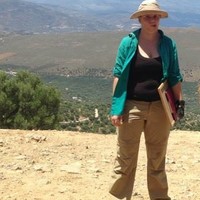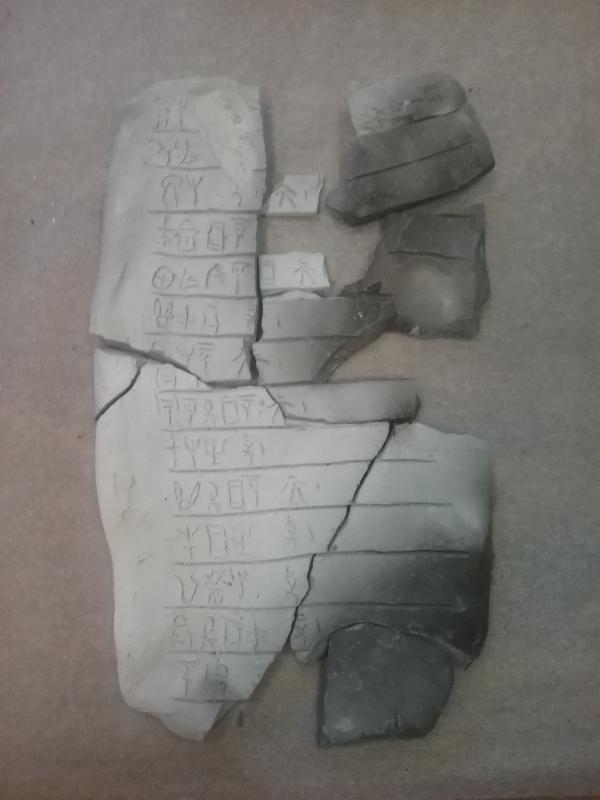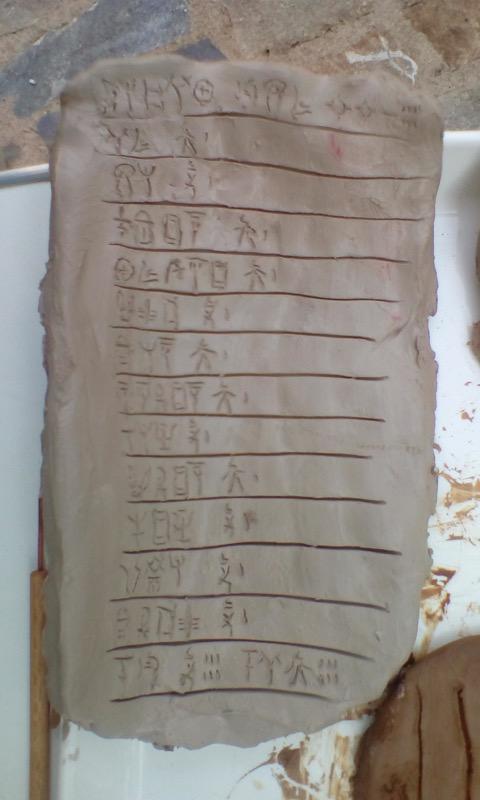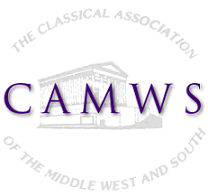2017 Benario Award Winner Sarah Hilker
 This summer, I was able to spend two weeks at the British School at Athens (BSA) to participate in their postgraduate training course with Professor John Bennet on Linear B and Mycenaean Greek. In the Aegean, writing was developed as a means of economic accounting for palatial administrations. The Linear B script of the Late Bronze Age Mycenaean centers is closely related to the earlier Linear A of Minoan Crete, but it is a different language - the earliest written form of Greek. The fact that the Linear B script is non-alphabetic, but instead syllabographic and ideographic can make it seem inaccessible. Although two weeks is not nearly enough time to master Mycenaean Greek grammar and the corpus of surviving documents, this course provided an excellent introduction to the script itself as well as to ways in which it can be used by non-specialists.
This summer, I was able to spend two weeks at the British School at Athens (BSA) to participate in their postgraduate training course with Professor John Bennet on Linear B and Mycenaean Greek. In the Aegean, writing was developed as a means of economic accounting for palatial administrations. The Linear B script of the Late Bronze Age Mycenaean centers is closely related to the earlier Linear A of Minoan Crete, but it is a different language - the earliest written form of Greek. The fact that the Linear B script is non-alphabetic, but instead syllabographic and ideographic can make it seem inaccessible. Although two weeks is not nearly enough time to master Mycenaean Greek grammar and the corpus of surviving documents, this course provided an excellent introduction to the script itself as well as to ways in which it can be used by non-specialists.
This program brought together a truly international group of students with a wide array of primary research interests - from Bronze Age Social Structure to Trade to Homer to Indo-European Linguistics to Mystery Cults to Roman Geographers - but all with a common interest in Linear B and how we can relate the information within these Mycenaean texts to our respective fields. Our seminars were not confined to a traditional classroom, but also took place in the National Archaeological Museum in Athens, and on-site at the major Mycenaean palaces of Pylos, Mycenae, and Tiryns, which allowed us to immerse ourselves not only in the texts, but also in their physical and cultural contexts.

 One of the highlights of the program was the practical session where we made our own tablets, fired them in order to better understand the effects of their depositional contexts and accidental preservation through burning, and practiced drawing, transliterating and analyzing the content of our homemade tablets. In making our tablets, we experimented with different types of clay and writing instruments. Rather than simply memorizing the syllabary, we acquainted ourselves with the script, in part, through learning to write our own and each other's names in Linear B, each making both an individual tablet and a summation tablet of the group's information. My third 'tablet' was actually a modified version of a real label, which would have been attached to a basket full of tablets detailing rations to particular locations. Learning to identify our individual scribal hands and content clues were important parts of finding joins in our broken fired tablets. Even though they were burned in a controlled environment, we still couldn't completely reassemble them!
One of the highlights of the program was the practical session where we made our own tablets, fired them in order to better understand the effects of their depositional contexts and accidental preservation through burning, and practiced drawing, transliterating and analyzing the content of our homemade tablets. In making our tablets, we experimented with different types of clay and writing instruments. Rather than simply memorizing the syllabary, we acquainted ourselves with the script, in part, through learning to write our own and each other's names in Linear B, each making both an individual tablet and a summation tablet of the group's information. My third 'tablet' was actually a modified version of a real label, which would have been attached to a basket full of tablets detailing rations to particular locations. Learning to identify our individual scribal hands and content clues were important parts of finding joins in our broken fired tablets. Even though they were burned in a controlled environment, we still couldn't completely reassemble them!
As an aspiring Mycenaean archaeologist, this course helped me become comfortable using an important class of evidence with which I had previously had very little experience. Furthermore, my short presentation at the end of the Linear B course allowed me to closely examine a group of houses at Mycenae, which are relevant to my dissertation, from an angle that I would not have been able to otherwise. Overall, this BSA summer course was a fantastic experience, and one that I would not have been able to participate in without the aid of the Benario Award. I am very grateful for this opportunity, and I would like to thank CAMWS for their generosity and support.
Sarah Hilker
University of North Carolina at Chapel Hill
